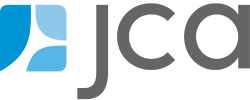Documentation During CRM Implementation: 3 Keys to Success

Brittany Ivey
Senior Consultant
There is an illustrious furniture and home goods store that is known for including assembly instructions that are the definition of minimalist: very few, if any, descriptions, and bare-bones illustrations that seem like a puzzle. We won’t name names, but we can likely all agree that insufficient documentation can lead to a frustrating experience when it comes to building something. Whether you are assembling a futon or implementing a robust CRM for your organization, documentation is critical. Quality documentation that captures your business processes will lead to greater efficiency, streamlined data management, and ensure a smooth transition to your new system. Read on to learn how you can protect your investment by documenting in all phases of your CRM implementation.
Key 1: Document not only “How”, but also the “Why” and “When”
This is a common misconception when it comes to process documentation. For most systems, basic “how-to” documentation already exists—in many cases, there are hundreds of pages of it! Some systems also now offer video documentation for an added visualization component. Rely on these existing resources for the basic click-by-click documentation; for example, how to enter a basic gift or create a new contact. Many organizations will factor the availability of helpful resources into their overall system selection, and CRM vendors who offer self-service support are often favored over those who do not.
With these existing resources just a few clicks away, focus your efforts instead on documenting the processes or exceptions that are unique to YOUR organization. Why did you choose to implement the system the way you did? What is a workaround or alternative process that you created during the implementation, based on what you learned during the process? Decisions made during implementation are often carefully considered and debated, and documenting those decisions will provide context for infrequent users or future new users.
Key 2: Include Expected Outcomes in Documentation
Going back to our furniture example, imagine this: you are given a set of materials and instructions for a chair and asked to put it together—but you’ve never seen a photo or illustration of what the end result should look like. It’s possible to succeed, but having an idea of the expected outcome will ensure success. The documentation that results from your CRM implementation should be process-focused, from starting the process to completing the process. Screenshots are helpful, but keep in mind that they may occasionally need to be revised as the system receives updates. Include examples where necessary, especially if there are example records in your database that can be used as reference.
Documenting expected outcomes is another opportunity to create documentation that is specific and unique to your organization and how you will use your system. For example, perhaps your organization decides to indicate which contacts are board members using a particular code or attribute in your new system. While basic how-to documentation may tell a future new staff member what buttons to click to create this code or attribute, effective process documentation will also include how it will be successfully used in the future: how often to update the codes, what to do if they serve multiple board terms, or how it will appear in reporting.
Key 3: Establish Ownership Early
Consider also the logistics for future updates and maintenance to your documentation. Since the content is specific to your organization, someone with intimate knowledge of your processes and organizational objectives should be tasked with ensuring process documentation remains up-to-date and relevant. Determine the best storage for your team: at JCA, we often see clients use Microsoft Teams or Google Drive, depending on their internal IT policies. Establish a regular schedule for updating the documentation and implement a review process. Be certain to archive previous versions to eliminate confusion and ensure your users are using the most recent version. Include the process documentation in your onboarding process to familiarize new staff with not only your system, but also the “how” and “why” behind your processes.
Bonus: When should you document during your CRM implementation? Documentation should be part of the discussion throughout the entire process; it should be started while the decision-making of mapping and design is still fresh. Exact timing may depend on staff capacity, but it should begin no earlier than during User Acceptance Testing and no later than 2-4 weeks after go-live. Process documentation can be drafted earlier, but we often find that processes may change and adapt based on User Acceptance Testing.
Documentation often seems like a nuisance, but with a clear vision for this process during your CRM implementation and beyond, it can become a valuable asset for current and future users.
Do You Need Help Assembling Your Policies and Procedures Documentation?
Our team of experts can help capture your organization’s workflows and roll out effective user documentation. We work with you to develop a format that ensures your business processes and standards are documented for long-term usability.

